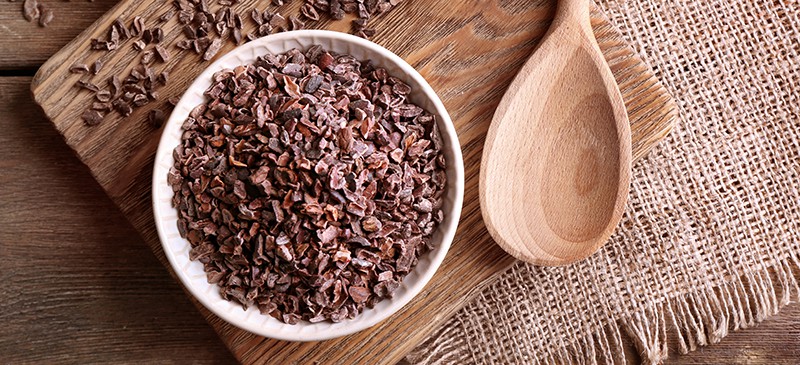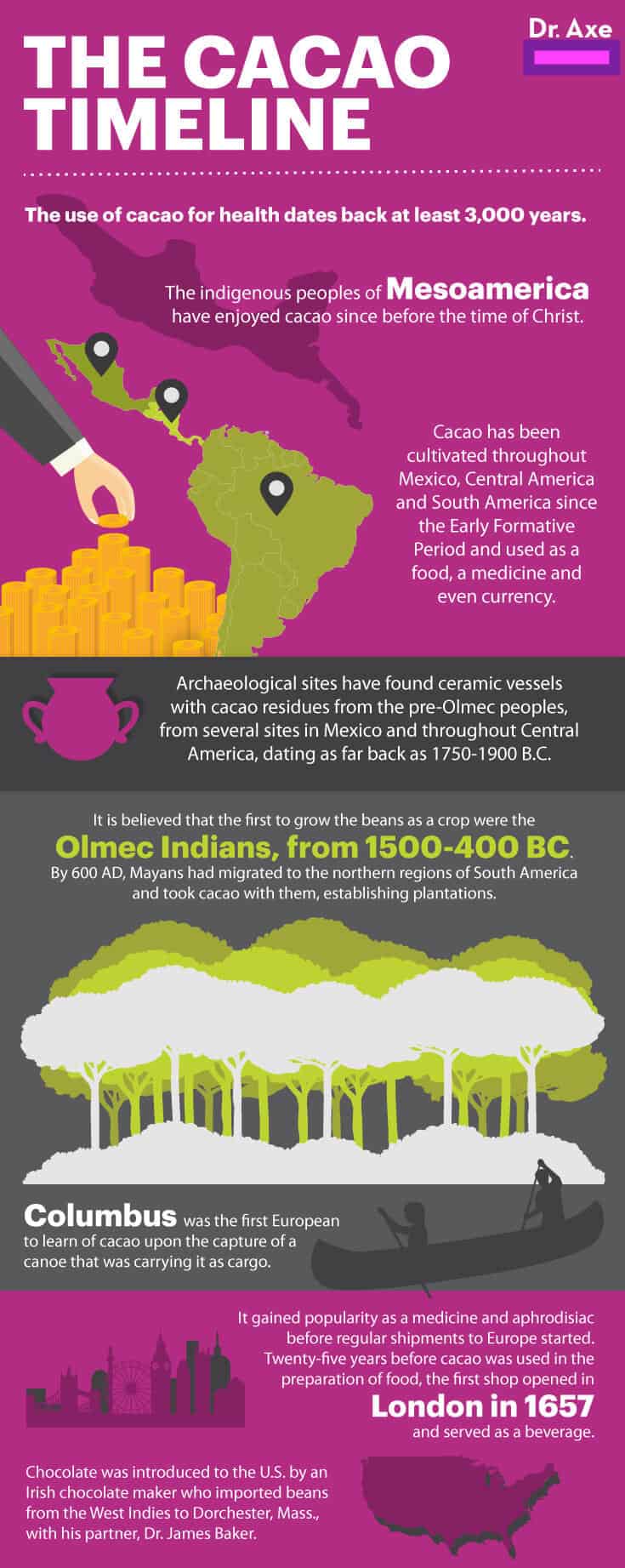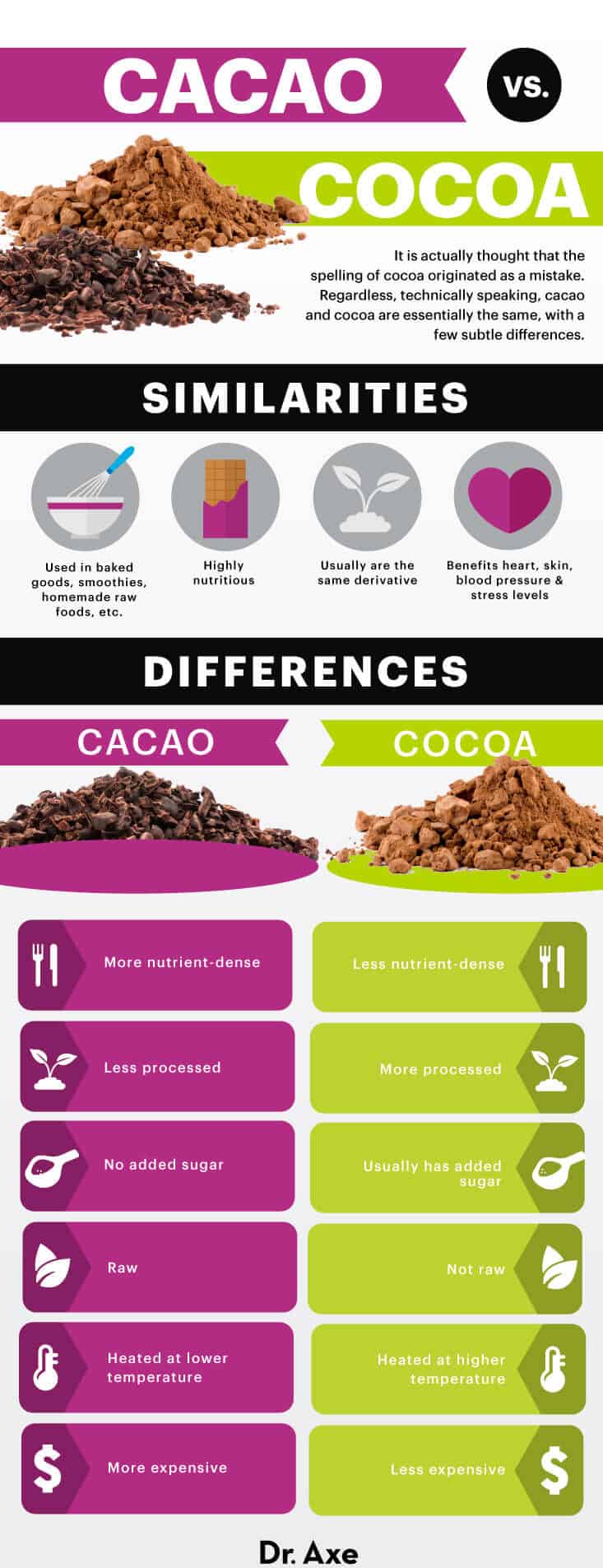This Dr. Axe content is medically reviewed or fact checked to ensure factually accurate information.
With strict editorial sourcing guidelines, we only link to academic research institutions, reputable media sites and, when research is available, medically peer-reviewed studies. Note that the numbers in parentheses (1, 2, etc.) are clickable links to these studies.
The information in our articles is NOT intended to replace a one-on-one relationship with a qualified health care professional and is not intended as medical advice.
This article is based on scientific evidence, written by experts and fact checked by our trained editorial staff. Note that the numbers in parentheses (1, 2, etc.) are clickable links to medically peer-reviewed studies.
Our team includes licensed nutritionists and dietitians, certified health education specialists, as well as certified strength and conditioning specialists, personal trainers and corrective exercise specialists. Our team aims to be not only thorough with its research, but also objective and unbiased.
The information in our articles is NOT intended to replace a one-on-one relationship with a qualified health care professional and is not intended as medical advice.
Cacao Nibs: A High-Fiber Superfood that Boosts Energy
July 8, 2024

There’s nothing like cozying up to the fireplace in the winter with a frothy cup of hot chocolate. And thanks largely to this cold weather favorite, we’re all familiar with cocoa and other forms of healthy dark chocolate — but what about cacao nibs?
Real, organic, raw cacao is a superfood containing a variety of unique phytonutrients, including high amounts of flavonoids, sulfur, magnesium and phenylethylamine. Believe it or not, cacao nibs are one of the best sources of polyphenols and have more antioxidant activity than tea, wine, blueberries and even goji berries.
These characteristics provide many benefits similar to the benefits of dark chocolate, such as reduced inflammation and improved focus, alertness and mood.
Unfortunately, what most of us think of as chocolate contains no real cacao at all — which means it does not provide these valuable compounds.
How do you choose the best types of cocoa/chocolate that will provide the most benefit? Keep reading to find out.
What Are Cacao Nibs?
Cacao nibs are cacao beans that have been cracked, fermented and broken into smaller pieces.
Cacao, or theobroma cacao, is the source of dark, natural chocolate. It comes from the seeds of the fruit of the cacao tree, which has been prized throughout history.
In fact, theobroma cacao is said to mean “food of the gods,” and many experts consider cacao to be a “super fruit.”
The use of cacao for health purposes dates back at least 3,000 years. The indigenous peoples of Mesoamerica have enjoyed cacao since before the time of Christ.
It’s been cultivated throughout Mexico, Central America and South America since the Early Formative Period and was used as a food, a medicine and even currency. In fact, cacao was so highly valued that ancient native people celebrated it in a variety of ways.
What do cacao nibs do for you? Several supposed health effects of cocoa are supported by research studies, including fighting oxidative stress, improving heart function, stimulating the nervous system, facilitating digestion and gut health, and improving kidney and bowel function.
In addition, cocoa has been used to treat anemia, mental fatigue, tuberculosis, fever, gout, kidney stone symptoms and even low libido.
Nutrition Facts
According to the USDA, two tablespoons (14 g) of cacao nibs contains:
- Calories: 80
- Total Carbohydrates: 7 g
- Fiber: 4 g
- Sugar: 1 g
- Total Fat: 5 g
- Saturated Fat: 2 g
- Trans Fat: g
- Protein: 1 g
- Cholesterol: 0 mg
- Sodium: 15 mg (1% DV*)
- Magnesium: 48 mg (11% DV)
- Iron: 0.72 mg (4% DV)
- Calcium: 9.9 mg (1% DV)
*Daily Value: Percentages are based on a diet of 2,000 calories a day.
Cacao nibs also contain manganese, copper, phosphorus, potassium, zinc, vitamin K, niacin, vitamin B12, pantothenic acid, calcium and selenium.
How Cacao Is Made
The cacao fruit tree produces cacao pods, which are cracked open to release cacao beans. The beans then can be processed in many ways.
Raw cacao beans are not roasted, while other types of cacao/cocoa used to make powder, butters and nibs.
One example is cacao butter, which is a less processed form of cocoa butter. Cacao butter is the fattiest part of the fruit and makes up the outer lining of the inside of a single cacao bean.
It’s white in color and has a rich, buttery texture that resembles white chocolate in taste and appearance.
Cacao butter is made by removing the bean during production. Then the remaining part of the fruit is used to produce raw cacao powder.
Similar to chocolate chips that you’ve seen in the grocery store, cacao nibs are cacao beans that have been chopped into edible pieces — however, they don’t have the added sugars and fats that most commercial cocoa contains. They do have all of the fiber, healthy fats and nutrients that make them a great option, though.
Cacoa contains both monounsaturated and saturated fatty acids, including oleic acid, a major monounsaturated fat that is also found in olive oil.
Have you heard of cacao paste? This comes from cacao nibs that have been slowly heated, which helps preserve the nutrients. Then the nibs are melted into a bark that’s a less-processed form of dark chocolate bars.

Benefits
1. High in protective antioxidants and anti-inflammatory compounds
Based on extensive research, the main health benefits of cacao stem from polyphenols and epicatechin, a flavanol found in cacao. The process of manufacturing dark chocolate retains epicatechin, whereas milk chocolate does not contain significant amounts.
Studies have demonstrated that catechins, anthocyanins and proanthocyanidins are the most abundant class of compounds contained in cacao.
Both epidemiological and clinical studies suggest a beneficial effect of dark chocolate on blood pressure, lipids, blood glucose levels and markers of inflammation. Proposed mechanisms underlying these benefits include enhanced nitric oxide bioavailability and improved mitochondrial structure and function.
Cocoa polyphenols have also been found to modulate intestinal microbiota, leading to the growth of beneficial bacteria that activate anti-inflammatory pathways.
One study published in the Journal of Cardiovascular Pharmacology notes that “flavanol-rich cocoa could be a potential candidate for the treatment, or possibly prevention, of the broad array of chronic diseases that are linked to dysfunctional inflammatory responses.”
2. Help maintain muscle and nerve function
Cacao beans are one of the best magnesium-rich foods around. Magnesium is a mineral needed for more than 300 biochemical reactions in our bodies, and cacao nibs contain quite a bit of it.
Magnesium is key to muscle and nerve function, keeping the heart rhythm steady. Thanks to its high magnesium content, along with the effects of epicatechin, studies suggest that cacao may improve muscle structure and enhances nerve function.
3. Can help prevent constipation
You don’t get any dietary fiber when you eat an ordinary chocolate bar, but one ounce of cacao nibs has nine grams. That makes cacao nibs an ultimate high-fiber food.
In addition, the fiber found in cacao may help keep your bowel movements regular. In a clinical study, subjects were given cocoa powder supplemented with high-fiber cocoa bran twice daily for two four-week periods.
The frequency of bowel movements increased and feelings of constipation decreased during the periods when cocoa powder was consumed. The raw cacao in these supplements was behind the natural constipation relief.
4. May reduce risk of coronary disease and stroke
Phenolic compounds in cacao have been shown to have health-promoting effects in aging, blood pressure regulation, vascular health and protection against atherosclerosis, not to mention diabetes/insulin resistance.
It’s been found that cocoa polyphenols induce release of nitric oxide (NO) through activation of endothelial NO synthase, which is one way it provides vasodilation and cardioprotective effects.
Antioxidants from chocolate are probably the most common source of benefits that we know. Cacao beans, especially when eaten raw, are some of the most rich high-antioxidant foods around thanks to the phytonutrients available in cacao nibs, helping absorb the free radicals that cause damage in the body.
A study published in Contemporary Reviews in Cardiovascular Medicine reported that epidemiological data shows regular dietary intake of plant-derived foods and beverages reduces the risk of coronary heart disease and stroke. In addition, studies have demonstrated beneficial effects of cacao on blood pressure, insulin resistance, and vascular and platelet function.
5. Help treat diarrhea
Cocoa beans have historically been used as a treatment for how to stop diarrhea, and researchers believe it may work due to the polyphenols contained in cacao, which inhibit certain intestinal secretions.
In a study conducted at Shanghai University of Traditional Chinese Medicine, the dose-dependent effects of flavonoid compounds present in cacao, or molecularly closely related compounds, were tested, resulting in the possible prevention of the buildup of fluid in the small intestine that’s associated with diarrhea.
6. Can help enhance your mood
Neurotransmitters are the little messengers in our brains that tell our bodies how to behave, ultimately affecting our moods. Cacao and cacao nibs have an amazing ability to act on those neurotransmitters.
Chocolate in the form of cacao stimulates the brain to release particular neurotransmitters that can trigger positive emotions. Studies have shown that consumption can have beneficial effects on satiety, cognitive function and mood.
There are two chemicals that cacao produces in our bodies when consumed. One is phenylethylamine (PEA), a chemical that our bodies make naturally. We produce PEA, an adrenal-related chemical, when we’re excited, which is what causes the pulse to quicken, providing us with more focus and awareness.
The other is anandamide, which is a lipid found in cacao known as the “the bliss molecule.” It has obtained this name due to its natural molecular shape, which represents that of THC, the active ingredient in marijuana.
Cacao Nibs vs. Cocoa
Today, most people consume refined versions of cacao beans that provide way fewer nutritional benefits. However, there are various forms — such as cacao powder, creme de cacao, raw cacao, cacao nibs, cacao beans and cacao butter — that, if consumed in their most raw and natural states, can give way to some amazing health benefits.
What is the difference between cocoa nibs and cacao nibs?
While you can use cocoa powder and cacao powder interchangeably in baked goods, smoothies, homemade raw foods and more, there are some notable differences.
- Cocoa is the term used to refer to the heated form of cacao that you probably grew up buying at the store in the form of cocoa powder and chocolate bars. When anything is heated beyond 104 degrees Fahrenheit, it begins to lose its nutritional value and can no longer be categorized as a raw food.
- Though cocoa may seem inferior to raw cacao, you can still get some nutritional benefits if you choose a variety without added sugars and milk fats or oils. It’s also less expensive.
- Cocoa powder is produced similarly to cacao except cocoa undergoes a higher temperature of heat during processing. However, it still retains a large amount of antioxidants in the process, so it still benefits your heart, skin, blood pressure and even your stress levels.
- Both cacao and cocoa are highly nutritious for you, but if you want more nutrients, cacao is the way to go. Cacao is an excellent source of monounsaturated fat, vitamins, minerals, fiber, natural carbohydrates and protein.
- It’s actually thought that the spelling of cocoa originated as a mistake. Regardless, technically speaking, cacao and cocoa are essentially the same things, but cocoa typically refers to a more processed chocolate product with added sugar. Raw cacao has no sugar — one of the reasons it’s a much better choice.

How to Use
How do cacao nibs taste? They have a chocolatey taste but are not quite as sweet as the chocolate you may find at your local market.
Much like coffee beans, their flavor can vary depending on how much they’re roasted.
Cacao nibs are often found with hints of fruity or nutty flavors that have been added. For anyone who is used to eating milk chocolate, cacao and cacao nibs seem very different, having a more bitter taste.
However, it can be an acquired taste and incredibly delicious when added to homemade trail mixes, smoothies, sauces and in baking.
Look for cacao in health food stores or online. The best type to buy is organic and raw cacao.
Cacao, being the purest form of chocolate you can consume, ultimately means it’s raw and much less processed than cocoa powder or chocolate bars. It’s also thought to be the highest source of antioxidants and magnesium of all foods.
You might also find cacao paste, along with cacao powder, which are great for raw vegan desserts and raw food diet snacks. They contain more fiber and calories than cocoa powder, since more of the nutrients from the whole bean are still intact.
Try using one or several tablespoons in both sweet and savory dishes. Here a few easy ways to get started:
- Add nibs to nut butters.
- Stir some into oatmeal.
- Mix them into healthy baked goods
- Try some in trail mixes and homemade granola/snack bars.
- Top coffee drinks with a tablespoon or two.
- Add some to a salad. Try adding it to vitamin C foods, such as bell peppers, broccoli and citrus fruits, to help increase the absorption of iron. Pair it with a citrus dressing and walnuts to boost the salad’s overall nutritional content.
- Try some in your favorite healthy smoothie recipes or an acai bowl.
- Top a quinoa breakfast bowl with a tablespoon (a good option for vegans). It’s delicious when paired with other phytonutrient-rich superfoods, such as whole grains, flax or chia seeds, and coconut.
- Make it a secret ingredient in sauces and marinades. Even though you get way more nutrition when it’s not heated beyond 104 degrees Fahrenheit, you still get benefits from cocoa when it’s cooked. Try adding it to your next pot of chili, mole sauce or pasta sauce to boost the flavor and nutritional value.
Risks and Side Effects
Cacao contains a high amount fat and calories. Consume in moderation, and be ultra-aware when combining with other calorie-dense foods so you don’t overdo it.
If you have an allergic reaction, stop consuming it immediately and check with your doctor.
Are cacao nibs bad for you if you’re sensitive to caffeine? Cacao nibs do naturally contain theobromine, which makes up 1 percent to 2 percent of the cacao bean.
It’s a nervous system stimulant that dilates the blood vessels similar to how caffeine affects the body. If you’re sensitive to caffeine, causing you to have anxiety or affect your sleep, you may want to be careful about how much cacao you consume, if any.
Another important fact is that some think that cocoa provides calcium — however, oxalic acid is a compound found in cacao that inhibits the absorption of calcium. So though there is calcium in cacao, it’s not considered a good calcium source for this reason.
In any case, you get more of the calcium by eating cacao than if you eat processed chocolate, because the sugar found in chocolate takes calcium reserves from the body.
Conclusion
- What are cacao nibs? They are small, crushed bits of dried and fully fermented cacao beans (seed of Theobroma cacao).
- Cacao is the source of original, natural chocolate that contains a variety of unique phytonutrients, including high amounts of flavonoids, polyphenols, sulfur, magnesium and phenylethylamine.
- Cacao nibs benefits include helping maintain muscle and nerve function, keep you regular, prevent anemia, reduce the risk of coronary heart disease and stroke, treat diarrhea, and enhance your mood.
- Cacao vs. cocoa, what’s the difference? Cacao and cocoa are essentially the same thing.
- The biggest difference is cocoa is heated at a higher temperature during process, thus loses some of the beneficial nutrition cacao contains. Cocoa also typically has more additives, while cacao is typically raw and a bit healthier.






